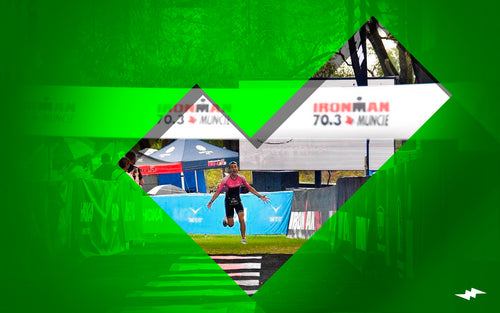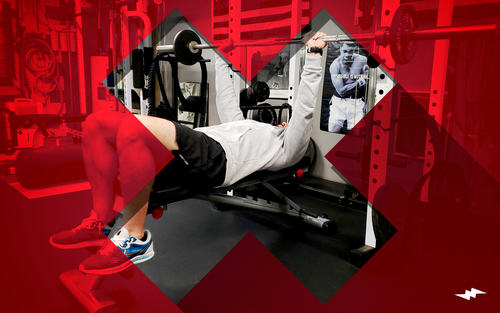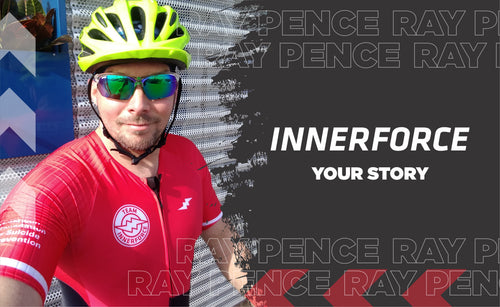Why Do My Bike Tires Keep Going Flat?

Walking home in the pouring rain, dressed in glaringly-visible Lycra, pushing your road bike along next to you with a flat tire is pretty much the image of ‘uncool’. If you have ever had to embark on the walk of shame yourself, then you probably went straight home and researched online how to make sure it would never happen again. For those of you that have yet to endure this experience, let us try and save you from it by turning our attention today to tire care. We’ll give you some pointers on what causes flat tires, how to deal with them, and how to avoid them in the future.
Some of the main reasons for getting a flat tire are incorrect pressures, wear and tear, or running over something sharp on the road.
Underinflated Tire

Bike tires are designed to work optimally at certain pressures. Not only will an underinflated tire feel spongy and sluggish, but it is also at risk of a ‘snakebite’ puncture. This can happen when you hit a bump or a pothole with an underinflated tire. The tire compresses for a moment and, as it snaps back to its previous position, the innertube gets pinched and this can cause a flat.
This is quite a common mistake with novice riders but is easy to fix. Always check your tire pressures before every ride. Just make it a habit; it takes less than a minute to check the pressures and add a little air. Whether you ride your bike every day or only every month this is a good routine to get into, and may well save you a long walk home one day.
Overinflated Tire
Take a look on the side of your bike tire and it should tell you the exact working pressure of your tire. A typical road-bike tire has a working pressure of 80-130 psi. One of the things to consider when inflating your tire is how much you weigh, because this will influence how much air to put in. The more you weigh, the higher pressure you will need. That said, never inflate over the recommended maximum pressure because this will likely cause a blowout. Start at the mid-range of the recommended pressure and then fine-tune from there.
If you are riding with overinflated tires then you will likely know straight away, because you will feel your teeth rattling around in your head with every bump on the road. If you continue to ignore this, then the innertube is at risk of exploding. This is another easily avoidable problem by simply checking the recommended tire pressures before pumping your tires up.
Dirty Valve
If you find that you have pumped up your tires to the recommended pressure, only to find them having gone soft the next day then it is worth checking the valve. The valve should come with a dust-cap which keeps most of the dirt and grime out of the valve, however you would not be the first person to forget to replace it after pumping up your tires and find that it has disappeared.
Simply grab a bowl of soapy water and give it a clean out. An old toothbrush will help to get any debris free. Inflate the tire again and see if this solved the problem, if it is still leaking then you’re best off replacing the innertube.
While you are getting a new innertube at your local bike shop you may also want to pick up some spare dust caps; they are dirt cheap and even come in bright colors so that you are less likely to lose them.
Puncture From A Sharp Object

Sometimes it is not neglect that causes a puncture, but just bad luck. It is inevitable that at some point you are going to ride over something sharp on the road; a thumb tack, some broken glass, a bottle cap. In this case the most important thing is to make sure that you do not simply remove the object and replace the innertube. Check the whole tire thoroughly for any other sharp objects that you may have missed the first time around. You would be surprised the amount of people who confidently swap out the innertube for a spare, only to find themselves with another flat moments later.
Although there is a lot of bad luck involved in this type of puncture, there is something that you can keep in mind that may make it happen to you less often. As vehicles drive along the road they create a clean line, and all the debris from the asphalt is thrown out to the sides. If you ride very close to the sidewalk, or the edge of the road, then you are more likely to ride over something sharp. While still being respectful of other road-users, you might do well not to hug the curbs too much.
Final Thoughts
Punctures are part of being a cyclist, but you can reduce the amount of times you get a flat by keeping your tires well maintained and clean, using the correct pressures and checking them regularly, and watching out on the road for any debris, particularly close to the edge of the road.
Written for Innerforce by Stewart Spiessens
Photos. @jimverner

Walking home in the pouring rain, dressed in glaringly-visible Lycra, pushing your road bike along next to you with a flat tire is pretty much the image of ‘uncool’. If you have ever had to embark on the walk of shame yourself, then you probably went straight home and researched online how to make sure it would never happen again. For those of you that have yet to endure this experience, let us try and save you from it by turning our attention today to tire care. We’ll give you some pointers on what causes flat tires, how to deal with them, and how to avoid them in the future.
Some of the main reasons for getting a flat tire are incorrect pressures, wear and tear, or running over something sharp on the road.
Underinflated Tire

Bike tires are designed to work optimally at certain pressures. Not only will an underinflated tire feel spongy and sluggish, but it is also at risk of a ‘snakebite’ puncture. This can happen when you hit a bump or a pothole with an underinflated tire. The tire compresses for a moment and, as it snaps back to its previous position, the innertube gets pinched and this can cause a flat.
This is quite a common mistake with novice riders but is easy to fix. Always check your tire pressures before every ride. Just make it a habit; it takes less than a minute to check the pressures and add a little air. Whether you ride your bike every day or only every month this is a good routine to get into, and may well save you a long walk home one day.
Overinflated Tire
Take a look on the side of your bike tire and it should tell you the exact working pressure of your tire. A typical road-bike tire has a working pressure of 80-130 psi. One of the things to consider when inflating your tire is how much you weigh, because this will influence how much air to put in. The more you weigh, the higher pressure you will need. That said, never inflate over the recommended maximum pressure because this will likely cause a blowout. Start at the mid-range of the recommended pressure and then fine-tune from there.
If you are riding with overinflated tires then you will likely know straight away, because you will feel your teeth rattling around in your head with every bump on the road. If you continue to ignore this, then the innertube is at risk of exploding. This is another easily avoidable problem by simply checking the recommended tire pressures before pumping your tires up.
Dirty Valve
If you find that you have pumped up your tires to the recommended pressure, only to find them having gone soft the next day then it is worth checking the valve. The valve should come with a dust-cap which keeps most of the dirt and grime out of the valve, however you would not be the first person to forget to replace it after pumping up your tires and find that it has disappeared.
Simply grab a bowl of soapy water and give it a clean out. An old toothbrush will help to get any debris free. Inflate the tire again and see if this solved the problem, if it is still leaking then you’re best off replacing the innertube.
While you are getting a new innertube at your local bike shop you may also want to pick up some spare dust caps; they are dirt cheap and even come in bright colors so that you are less likely to lose them.
Puncture From A Sharp Object

Sometimes it is not neglect that causes a puncture, but just bad luck. It is inevitable that at some point you are going to ride over something sharp on the road; a thumb tack, some broken glass, a bottle cap. In this case the most important thing is to make sure that you do not simply remove the object and replace the innertube. Check the whole tire thoroughly for any other sharp objects that you may have missed the first time around. You would be surprised the amount of people who confidently swap out the innertube for a spare, only to find themselves with another flat moments later.
Although there is a lot of bad luck involved in this type of puncture, there is something that you can keep in mind that may make it happen to you less often. As vehicles drive along the road they create a clean line, and all the debris from the asphalt is thrown out to the sides. If you ride very close to the sidewalk, or the edge of the road, then you are more likely to ride over something sharp. While still being respectful of other road-users, you might do well not to hug the curbs too much.
Final Thoughts
Punctures are part of being a cyclist, but you can reduce the amount of times you get a flat by keeping your tires well maintained and clean, using the correct pressures and checking them regularly, and watching out on the road for any debris, particularly close to the edge of the road.
Written for Innerforce by Stewart Spiessens
Photos. @jimverner
SEE WHAT CUSTOM APPAREL LOOKS LIKE

GEAR UP
MORE FROM THE BLOG

5 Qualities Of A Successful Triathlete
What is it that makes the Brownlee brothers such successful triathletes? How did Chrissie Wellington dominate the sport of Ironman...

5 Exercises To Improve Bike Strength
There are a million reasons why being strong on the bike will improve you as a triathlete. Whether it is...

5 Common Strength Training Mistakes That Triathletes Make
Strength training is oftentimes pushed to the back of our training programmes as triathletes. At best it is an add-on...

COMBINING TRIATHLON WITH MULTIPLE JOBS by Ray Pence
@raypencetri (Instagram) Ray Pence (37) has been part of Team Innerforce for quite some time now. We sat down...



